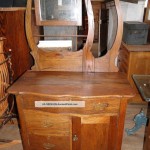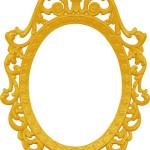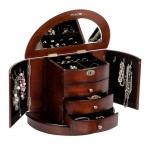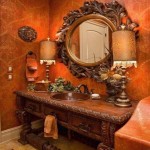How Do You Put a Border Around a Bathroom Mirror?
Adding a border to a bathroom mirror is a simple yet effective way to enhance the room's aesthetics. Whether aiming for a touch of elegance, a rustic vibe, or a modern feel, various bordering techniques cater to different styles and budgets. This article explores several methods for framing a bathroom mirror, outlining the necessary materials, tools, and step-by-step instructions for each approach.
Using Adhesive Mirror Tiles
Adhesive mirror tiles offer a quick and relatively inexpensive way to create a framed look. These tiles come in various sizes and shapes, allowing for customization and a variety of design possibilities. The mirrored surface reflects light, making the bathroom appear larger and brighter.
Materials: Adhesive mirror tiles, measuring tape, pencil, cleaning solution, soft cloth.
Instructions:
1. Thoroughly clean the mirror surface with a suitable cleaning solution and a soft cloth. Ensuring a clean, dry surface is crucial for proper adhesion.
2. Measure the perimeter of the mirror to determine the number of tiles required.
3. Starting at one corner, carefully peel the backing off each tile and adhere it to the mirror's edge. Align the tiles precisely to create a seamless border.
4. Continue applying tiles around the entire perimeter of the mirror, ensuring consistent spacing and alignment.
Constructing a Wooden Frame
A wooden frame provides a classic and versatile bordering option. The type of wood, stain, and finish can be customized to complement the bathroom's existing décor. This method requires some basic carpentry skills and tools.
Materials: Wood boards (e.g., pine, oak), miter saw, wood glue, finishing nails, wood filler, sandpaper, stain or paint, sealant.
Instructions:
1. Measure the dimensions of the mirror accurately.
2. Cut the wood boards to the appropriate lengths, using a miter saw to create 45-degree angles for the corners. The inside edges of the frame should match the mirror's dimensions.
3. Apply wood glue to the mitered edges and join the pieces to form a frame. Secure the corners with finishing nails.
4. Fill any nail holes with wood filler and sand the frame smooth.
5. Apply the desired stain or paint and allow it to dry completely.
6. Seal the frame with a protective sealant to prevent moisture damage.
7. Carefully attach the frame to the wall around the mirror using appropriate fasteners, ensuring it is securely mounted and aligned with the mirror.
Applying Decorative Molding
Decorative molding offers another elegant and customizable option for creating a mirror border. A wide variety of molding styles, from simple to ornate, are available to match diverse design preferences. This technique is generally less demanding than building a wooden frame from scratch.
Materials: Decorative molding, measuring tape, miter saw (or miter box and hand saw), construction adhesive, finishing nails (optional), caulk, paint or stain, sealant.
Instructions:
1. Measure the perimeter of the mirror to determine the required length of molding.
2. Cut the molding pieces to the appropriate lengths using a miter saw or a miter box and hand saw to create angled corners.
3. Apply construction adhesive to the back of each molding piece.
4. Carefully position the molding around the mirror's edge, pressing firmly to ensure proper adhesion. For added security, small finishing nails can be used.
5. Fill any gaps between the molding and the mirror or wall with caulk. Smooth the caulk with a damp finger.
6. Once the caulk is dry, apply the desired paint or stain to the molding. Allow it to dry thoroughly.
7. Apply a sealant to protect the molding from moisture and extend its lifespan.
Considerations for Material Selection
When choosing a material for your mirror border, consider the bathroom's overall style and the level of moisture exposure. Wood provides a classic look but requires proper sealing to prevent water damage. Mirror tiles are easy to install and reflect light effectively, but may be less durable than other options. Molding offers a wide range of styles and can be made from moisture-resistant materials like PVC.
Careful planning and execution are essential for achieving a professional-looking result when adding a border to a bathroom mirror. Selecting the right materials and following the correct procedures will ensure a beautiful and long-lasting enhancement to your bathroom.

How To Frame Out That Builder Basic Bathroom Mirror For 20 Or Less

Easy Diy Tutorial Adding Trim Around A Giant Mirror For Ers

Mirror Frame Diy How To Update A Basic Bathroom Our Faux Farmhouse

How To Frame A Mirror

Diy Stick On Mirror Frame Sawdust Sisters

Diy Bathroom Mirror Frame With Molding The Happier Homemaker

How To Install A Mirrorchic Bathroom Mirror Frame Momhomeguide Com

How To Frame Out That Builder Basic Bathroom Mirror For 20 Or Less

Diy Bathroom Mirror Frame Without Removing Clips Her Happy Home

Mirror Frame Diy How To Update A Basic Bathroom Our Faux Farmhouse








